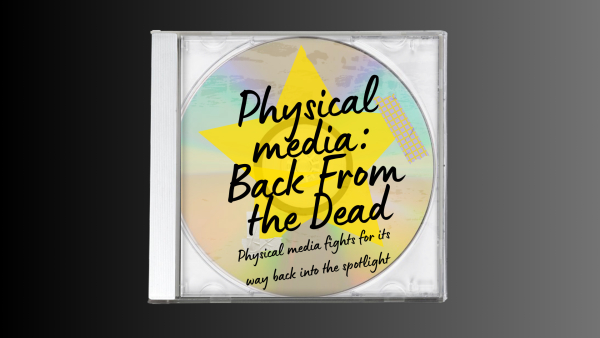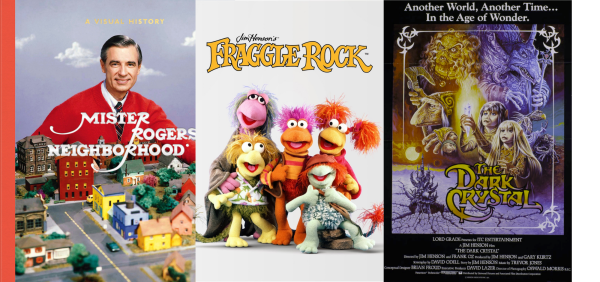HELLO, DOLLY!: New eras, casting, and romanticism
Hello, Dolly!:

The ‘Golden Age of Musicals’ is more a concept than clear cut definition- the epitome of ‘you know it when you see it’. Typically, the term refers to movie musicals produced in the 1940s-60s that feature sweeping scores, love stories, and bright technicolor. Singin’ in the Rain (1952), An American in Paris (1951), Guys and Dolls (1955), and White Christmas (1954) are all prime examples of the genre, and all reflect ‘escapist narratives’.
Oxford Languages terms ‘escapism’ as: the tendency to seek distraction and relief from unpleasant realities, especially by seeking entertainment or engaging in fantasy. This isn’t to say that the aforementioned movies don’t contain darker elements, but there is an almost implicit promise that good will prevail and love will triumph.
Escapism is a necessary form of entertainment, but one that was becoming markedly less popular near the end of the 1960s. The 1970s saw movie musicals like Grease (1978), The Rocky Horror Picture Show (1975), Cabaret (1972), and Jesus Christ Superstar (1973). Cabaret was not only filmed in a more realistic way, its story directly commented on the dangers of living in illusions and dreams. Cabaret also had weighty subject matter, dealing with the rise of facism and Nazism in Berlin during the 1930s. The Rocky Horror Picture show was one of the first musicals to receive an R rating, and Grease offered a more adult view on teenage life- showing teens smoking, drinking, and having pregnancy scares. Even before this, musicals were trending towards more grounded plots; 1961 saw the release of West Side Story which was groundbreaking in its grittiness. With this in mind, it’s no surprise that the 1969 musical Hello, Dolly! was not only received poorly, but was the final nail in the coffin for the Golden Age movie musical.
It’s an unfortunate tragedy, but one that had been building for years. Now, in an era that isn’t as vehemently opposed to escapism, it’s time to look back on Hello, Dolly! and give it the credit it was deserving of the first time- before ‘The Parade Passes By’ again and this gem is forgotten for another fifty years.
Hello, Dolly! is a movie musical directed by Gene Wilder, adapted from the stage musical of the same name with music and lyrics by Jerry Herman and a book by Michael Stewart. The story is that of Dolly Levi (Barbara Streisand), who wants to marry the irritable but endearing Horace Vandergelder (Walter Matthau). Dolly comes to visit Horace at his work and unsuccessfully attempts to convince him to allow Ambrose Kemper (Tommy Tune) to marry Horace’s niece, Ermengarde Vandergelder (Joyce Ames). Horace is leaving their town of Yonkers to go up to New York to march in the parade, and to propose to the milliner Irene Malloy (Marianne McAndrew). Dolly also plans to go to New York, and the clerks at Horace’s store- Cornelius Hackl (Michael Crawford) and Barnaby Tucker (Danny Lockin)- opportunize on their boss’ absence to go to New York to pursue love. Shortly after Cornelius and Barnaby arrive, they meet Irene and her assistant Minnie Fay (E.J. Peaker) and obviously fall head-over-heels for one another. The rest of the movie follows the various couples and soon-to-be couples as they get involved in various hijinks leading, ultimately, to Cornelius and Irene and Barnaby and Minnie decrying their undying love for each other, and Dolly and Horace getting married.
The only noticeable error with this plotline is the age of Barbara Streisand when she played Dolly Levi. Dolly is a widow, and one who has been widowed long enough to feel comfortable getting married again. She treats characters like Cornelius and Barnaby maternally, and her friends are all middle-aged, as is her love interest. But Streisand was 27 when she was in the movie- the same age as Crawford when he played Cornelius. Streisand looks slightly older than Crawford, but significantly younger than the 49-year-old Matthau that she is playing opposite against. Visually, she looks like she should be the love interest of Cornelius or Barnaby, not Horace. Other productions of the show feature older actresses in the pivotal role, the likes of Bernadette Peters and Bette Midler have been seen before. Streisand is more than qualified for the role, lending a perfect voice, charisma, and acting, but the discrepancy in the ages is undeniable.
Setting this aside, everything about the movie works. It’s so self-assured in what it wants to be that it doesn’t shy away from indulging in the tropes of musicals. Every scene has a grandiose feeling to it- the dance numbers take place in the streets and involve entire towns worth of people. Costumes are flashy, smiles are big, and the songs don’t always advance the plot, existing solely to appreciate the performers- a choice that is especially good when Streisand and Louis Armstrong share a duet.

On top of the sheer spectacle of it all, Hello, Dolly! is full of relevant messages surrounding the pursuit of love, happiness, and living life to its fullest. It places impetus on bosses and business owners to ensure their employees aren’t being overworked, and warns against work taking over all aspects of life. It’s also an encouragement to take risks and pursue all roads even if they may not work out. It acknowledges the wealth of the main characters to introduce the moral of taking care of one another- that those with money should spread their money around in their community. Love for one’s community is crucial for happiness. Dolly relies on her friends and town to support her as she grieves, and she relies on them when she falls in love again. It’s a sign for all people to go out and seek love in all its forms, to take the chances necessary to meet new people.
The characters are the true standouts of the piece, each compelling to watch and easy to root for. Dolly is magnetic in all her scenes, managing to come across as both wise and in-touch with the world around her. She’s in love with life, and in love with living her life to the fullest, and she inspires these emotions in those around her. Her costumes (brilliantly designed by Irene Sharaff) reflect this; they are full of bright colors, full skirts, and matching accessories. Compared to characters like Horace, who can most often be seen wearing a practical suit, Dolly belongs in their lushly colored world more. Through interacting with Dolly, and becoming inspired by her, the other characters also become brighter. Especially through Irene, the audience is able to see the positive ripples of Dolly’s presence- watching Irene wear warmer colors with more texture and grander designs, this in turn, passes on to Minnie. Similarly, love has a transformative effect on the characters and their appearance, with couples dressing in coordinating colors and prints. The longer Cornelius and Irene spend together, the more Cornelius begins to belong to her world of New York rather than Horace’s world of Yonkers. The dance scenes in the latter half of the film are a perfect encapsulation of this, as various couples from all over New York flood into the streets to twirl in various shades of the rainbow. It’s immediately obvious who the couples are as they all belong to matching sets, but rather than feel forced, it feels like a symbolic and natural extension of love- once you find the person you love, you’re forever influenced and changed by them.
Throughout the story, the fates of the various characters become intertwined, and the resolution to their problems are dependent on each other. None of them can thrive without the others both supporting and challenging them. It is Dolly who encourages Cornelius and Barnaby to not let Irene and Minnie go, and in turn, Cornelius and Barnaby who inspire Horace to tell Dolly his true feelings.
In the most heart-warming song, ‘It Only Takes a Moment’, Cornelius reflects on how quickly love emerges, and how quickly someone becomes integral to your life. Love is treated as a compulsory emotion, one that shouldn’t be denied because it can lead to beautiful connections. As perfectly phrased by Jerry Herman: It only takes a moment to be loved a whole life long.
9.5/10 would explore the world outside of Yonkers again
Further breakdown:
Writing Quality: 9/10 Enjoyability: 10/10
Pace: 9/10 Visual elements: 9/10
Plot development: 9/10 Insightfulness: 9/10
Characters: 10/10






